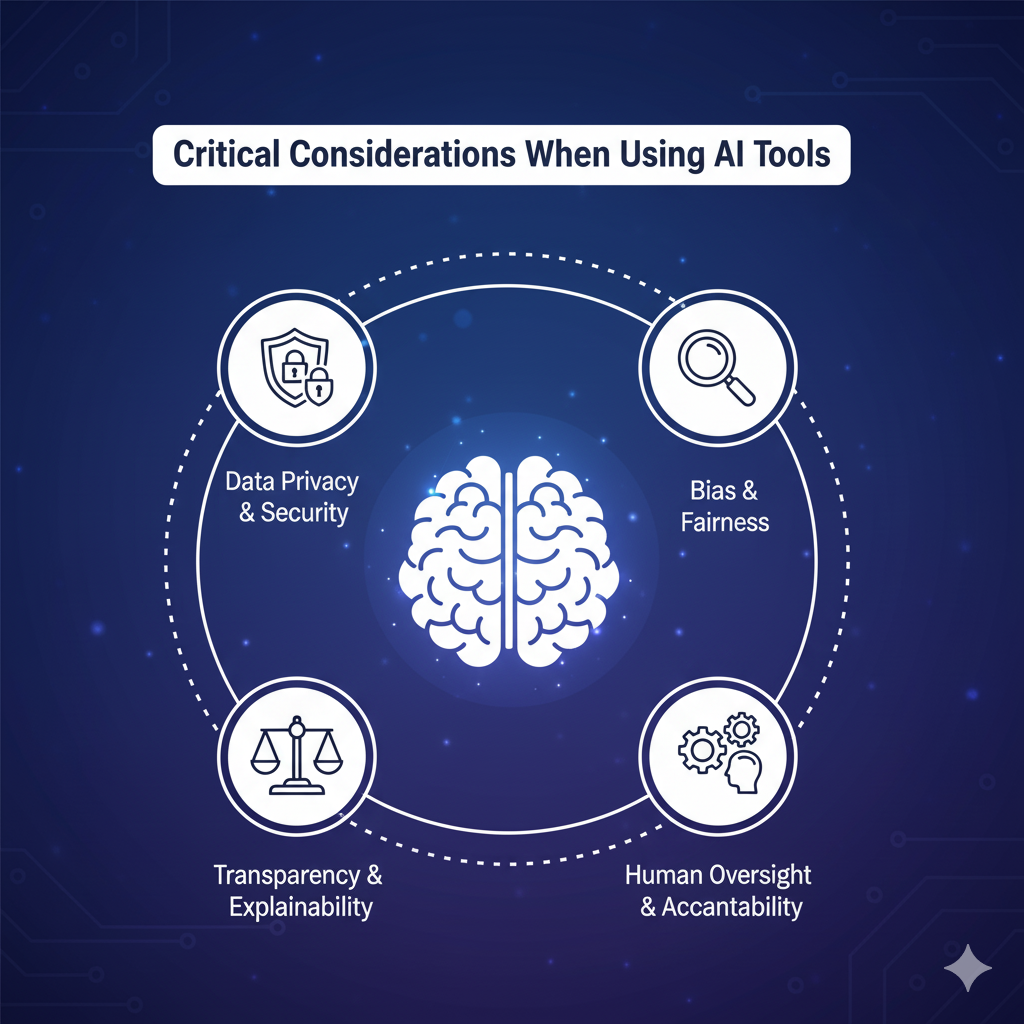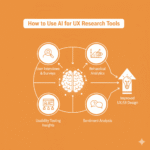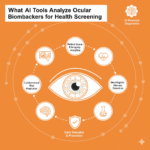AI tools are everywhere today from content creation and SEO to healthcare, design, and marketing. They promise speed, efficiency, and smarter decision-making. But while AI can be a powerful ally, it’s not without risks. Using AI effectively requires careful thought and critical considerations to ensure you get value without running into ethical, legal, or practical problems.
In this article, we’ll explore the most important considerations when using AI tools and how to use them responsibly.
Why AI Requires Critical Consideration
AI tools can feel magical, but they operate on algorithms, training data, and predictive models. This means:
- They are not always 100% accurate – AI can make mistakes, especially when data is biased or incomplete.
- They can unintentionally reinforce biases – If trained on skewed data, outputs may reflect those biases.
- They may create privacy or legal issues – Handling sensitive information without proper safeguards can be risky.
- They require human oversight – AI should augment human work, not fully replace critical judgment.
Understanding these risks helps you maximize benefits while minimizing potential harm.
Key Considerations When Using AI Tools
Here are the most critical points to think about before implementing any AI tool:
1. Data Quality and Bias
- AI tools learn from the data they are given. Poor quality, incomplete, or biased data leads to inaccurate or unfair results.
- Practical Tip: Always audit the input data and understand its limitations before relying on AI outputs.
2. Transparency and Explainability
- Some AI systems operate as “black boxes,” making it hard to understand why they produce certain results.
- Practical Tip: Use AI tools that offer explainable outputs, especially in decision-critical areas like finance, healthcare, or hiring.
3. Human Oversight
- AI can automate repetitive tasks, but humans need to review critical decisions to avoid costly mistakes.
- Practical Tip: Always validate AI-generated recommendations, especially when they impact users, customers, or patients.
4. Ethical Use
- AI can easily be misused, from deepfake content to manipulative marketing practices.
- Practical Tip: Set ethical guidelines for AI use and ensure your team understands the boundaries.
5. Privacy and Security
- AI tools often process sensitive personal or business data. Mismanagement can lead to breaches or regulatory violations.
- Practical Tip: Choose AI tools that comply with GDPR, HIPAA, or other relevant privacy laws and ensure data is encrypted.
6. Tool Reliability and Accuracy
- Not all AI tools are built equal. Some claim to do more than they actually deliver.
- Practical Tip: Test AI tools on a small scale before full implementation and track accuracy over time.
7. Cost vs. Benefit
- AI tools can be expensive, both in terms of subscription costs and training time.
- Practical Tip: Analyze whether the efficiency gains or insights truly outweigh the costs.
Common Scenarios Where Critical Consideration Matters
- Marketing & Content Creation – AI-generated copy can sound human, but errors or plagiarism risks remain.
- Healthcare & Diagnostics – Misinterpreted data can lead to wrong treatment recommendations.
- HR & Recruitment – Biased AI screening tools may unfairly disadvantage certain candidates.
- Financial Services – AI predictions can mislead investment or credit decisions if not carefully monitored.
In all these scenarios, human review, ethical safeguards, and data validation are crucial.
Best Practices for Using AI Tools Safely
- Understand the Tool Fully: Know its capabilities, limitations, and data sources.
- Audit Results Regularly: Periodically check outputs for errors, bias, or unintended consequences.
- Keep Humans in the Loop: Automate repetitive tasks, but retain oversight on critical decisions.
- Prioritize Security: Use encrypted platforms, manage permissions, and comply with privacy laws.
- Document Use Cases: Maintain a record of how AI is applied to ensure accountability.
- Train Your Team: Educate users on responsible AI practices and potential pitfalls.
Conclusion
The most critical consideration when using AI tools is responsible and informed usage. AI is powerful, but it is not infallible. Its outputs depend on data quality, algorithm design, and human oversight.
When you focus on ethics, transparency, accuracy, and privacy, AI becomes a force multiplier rather than a liability. The goal is not to blindly trust AI, but to integrate it thoughtfully into workflows leveraging its speed and intelligence while keeping humans in control.
In short, the critical consideration is: don’t let AI run unchecked always use it responsibly, ethically, and intelligently.
Discover more from PratsDigital
Subscribe to get the latest posts sent to your email.


